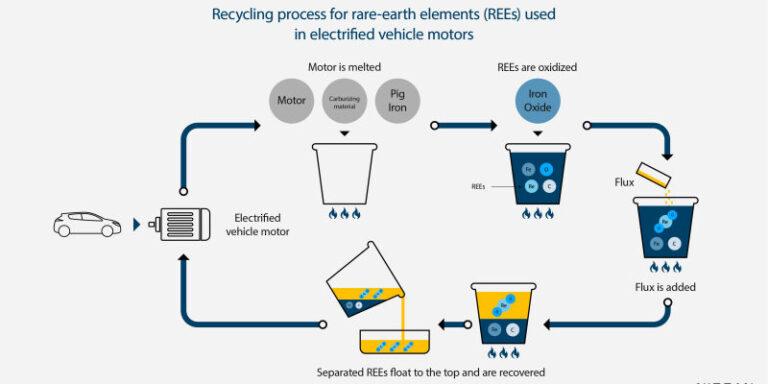Nissan and the Japanese Waseda University say they have begun testing and co-developing a recycling process that aims to recover high-purity rare earth compounds from EV motor magnets.
With many EV motors utilizing rare earth materials, the evolution of the recycling process is seen as an important step to aid in reducing the environmental impacts associated with mining and refining operations. As the balance of supply and demand for the rare materials shifts, this can also lead to prices rising or falling.
The first successful pyrometallurgy process was developed by the partnership in March 2020 and negates the need to disassemble EV motors before recovering REEs.
At present, the testing phase has shown that 98% of REEs from the EV motors can be recovered. The latest process is also around 50% quicker than the current method as magnets don’t have to be demagnetized, disassembled or removed.
Both companies will continue to develop the process for practical application, and Nissan will continue to collect metals from the EV recycling process to further develop the company’s recycling system. The duo hopes to begin using the process by the middle of the decade.
The process works by adding carburizing material and pig iron to the motor, which is then heated to a melting point of 1,400˚C. Iron oxide is added to oxidize REEs in the molten mixture. A small amount of borate-based flux is then placed into the mixture to dissolve the rare earth oxides at a low temperature. This borate-based flux is also highly efficient at recovering REEs.
As a result of the process, the molten mixture then separates into two layers, a molten oxide layer (slag) that contains the REEs at the top, and a high-density iron-carbon (Fe-C) alloy at the bottom. The REEs are then recovered.


